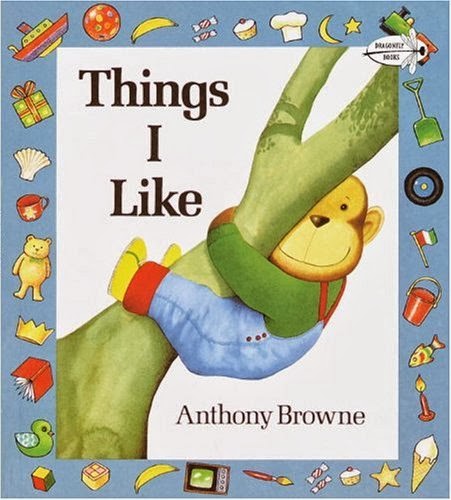focusing on play...and how play supports the development of early literacy skills.
You may ask yourself, “How does playing help children get
ready to read?” The answer—in a lot of
ways. Today we will be talking about
play and how it supports early literacy skills that help children read and
become successful students.
Much research has been done in regarding to children and
play. I won’t bore you with all the
details, but I want you to understand that the things we’re discussing today
are based on research.
Play for children is not just being left alone with
toys. Parents and caregivers are key in establishing
meaningful and rich play that supports early literacy skills.
For this presentation play is NOT any kind of interaction
with electronic devices: TVs, DVDs,
video games, computer games, iPads and other hand-held devices. Research has shown that children need to be
limited in the amount of screen time they have, for a variety of reasons…one of
which is literacy development.
“Children and teens
should engage with entertainment media for no more than one or two hours per
day, and that should be high-quality content. It is important for kids to spend
time on outdoor play, reading, hobbies, and using their imaginations in free
play.
Television and other
entertainment media should be avoided for infants and children under age 2. A
child's brain develops rapidly during these first years, and young children
learn best by interacting with people, not screens.”
The library has many resources about quality play for
children including these books:
·
Unplugged Play
·
Playing Together
·
Baby Smarts
These will give you additional ideas of play activities to
do with your child and play experiences for your child to engage in on their
own or with other children.
- Play with parent/adults
- Play with peers
- Play alone
High quality
play—raising the level of play
Play that encourages language—talking,
telling, explaining, negotiating, questioning, repeating…
Developing oral language skills has direct correlation to
learning the written word. The more
words a child knows, the ability to rhyme, the ability to retell a story,
identifying differences, and so forth all build a foundation for reading.
Dramatic/pretend play is high level of play that supports
the development of oral language—which supports written language.
Toys that encourage pretend play: dolls and stuffed animals,
doctor kit, kitchen items, “tools”, doll house, puppets, dress-up, boxes,
blocks, playdough
· Using props imaginatively—boxes, blocks—as props
to encourage more language (this is my phone, etc.)
Don’t always use realistic props
Use combination of realistic,
symbolic, and unstructured props
·
Learning Symbolic Representation
Using objects that represent
other objects (play dough for food, etc.)
Expanding Play Themes
Introduce
children to new settings and experiences
Field
trips—out in the world!
Bakery, pizzeria, library, grocery
store, bank, restaurant, zoo, farm, farmers market, forest, fire/police
station, museum (not too long!), construction site
TALK while on the trip; ask
questions; when you get home talk about these trips—what did they like?
Questions so they can explain experience in their own words. Create play items around the experience
Carefully
selected video clips (construction workers, spaceship, ocean, etc)
Parent’s role is to now help establish a way for children to
“play” out the experience. Children will
need some support and encouragement to try something new. Give children cookie cutters, cookie tray,
pot holders, spatula, bowl, spoon, etc. so they can pretend bakery. Offer paper and pens so children can make a
menu for a restaurant. Give them access
to items they may not know about or have ready access to. Often parents can get the kids started and
then back away. Adult interaction is
important and good, but playing alone and just with peers is also important! When playing with children don’t dominate the
play—if child gets in a rut introduce a new element. Encourage
Play around books
An additional way to add literacy into play!!
Sharing Books—similar
story with different illustrations—act out stories (make own props, puppets,
etc.), experiences related to book
Example: Little Red
Hen (language—same story with different characters/illustrations and slightly
different words)
Talk
about the different animals in each story
Play
with wheat (sensory table), plant wheat
Grind
wheat
Make
bread (watch yeast)—kneading, watch rise, bake, cut, eat!
Retell
story—with props, stick puppets, etc.
Example: Chicka
Chicka Boom Boom
Magnetic
letters (on cookie sheet, fridge, etc.)
Matching
capital and lower case
Write
letters
Re-read
the book to self
Connect
with non-fiction book(s)
Bug
Counters—don’t have—cut out pictures to sort
Magnifying
glass – if they get tired of bugs, look at other things!
Example: Mouse Paint
Eye
dropper/food coloring water
Paint
in Ziploc
Fingerpaint























































